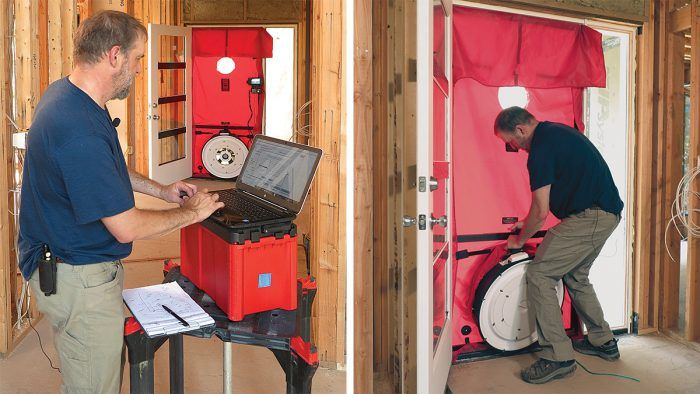Amidst the buzz surrounding sustainable architecture and energy efficiency, a silent yet significant culprit often goes unnoticed: air leakage. While the spotlight frequently shines on high-efficiency HVAC systems and insulation, the integrity of a building's envelope remains paramount. Enter air leakage testing, a critical process that evaluates a building's airtightness, ensuring its energy efficiency, indoor comfort, and overall performance.
The Science Behind Air Leakage Testing
Air leakage testing, commonly conducted using a blower door, entails pressurizing or depressurizing a building while measuring airflow to quantify the extent of air infiltration or exfiltration. This procedure, often expressed in air changes per hour (ACH) or cubic feet per minute (CFM), provides valuable insights into the building's envelope tightness and potential energy losses.
Energy Efficiency: Beyond the Surface
At its core, air leakage testing is instrumental in optimizing energy efficiency. By sealing off unintended pathways for air exchange, such as gaps around doors, windows, and penetrations, buildings can minimize the loss of conditioned air, thus reducing heating and cooling loads. Consequently, energy consumption decreases, operational costs plummet, and carbon footprints shrink, embodying a tangible commitment to sustainability.
Indoor Air Quality: Breathing Life into Spaces
The impact of air leakage extends beyond energy savings to encompass indoor air quality (IAQ). Uncontrolled air infiltration introduces pollutants, allergens, and moisture, jeopardizing occupants' health and comfort. Through meticulous air leakage testing and subsequent remediation, buildings can create healthier indoor environments by mitigating the ingress of outdoor contaminants, fostering spaces where occupants thrive.
Navigating Compliance and Standards
In the realm of building regulations, air leakage testing has emerged as a pivotal requirement for new constructions and major renovations. Mandated by building codes and standards worldwide, such as the International Energy Conservation Code (IECC), these assessments ensure buildings meet prescribed airtightness criteria. Compliance not only aligns with regulatory obligations but also underscores a commitment to excellence in sustainable construction practices.
Unveiling Hidden Leakage Points
Air leakage testing serves as a diagnostic tool, unveiling hidden leakage points within the building envelope. Leveraging advanced techniques like thermal imaging and smoke testing, technicians pinpoint areas of concern, from poorly sealed windows to unsealed ductwork. Armed with this knowledge, targeted measures can be implemented, fortifying the building's envelope and enhancing its overall performance.
Conclusion: A Paradigm Shift in Building Practices
In summary, air leakage testing https://energyincentivesinc.com/air-leakage-testing/ represents a paradigm shift in building practices, elevating the standards of energy efficiency and indoor comfort. By scrutinizing a building's envelope integrity and addressing air leakage proactively, stakeholders pave the way for sustainable, resilient structures that prioritize occupant well-being and environmental stewardship. As the construction landscape evolves, integrating air leakage testing into standard protocols emerges as a non-negotiable step towards a greener, more efficient built environment.



